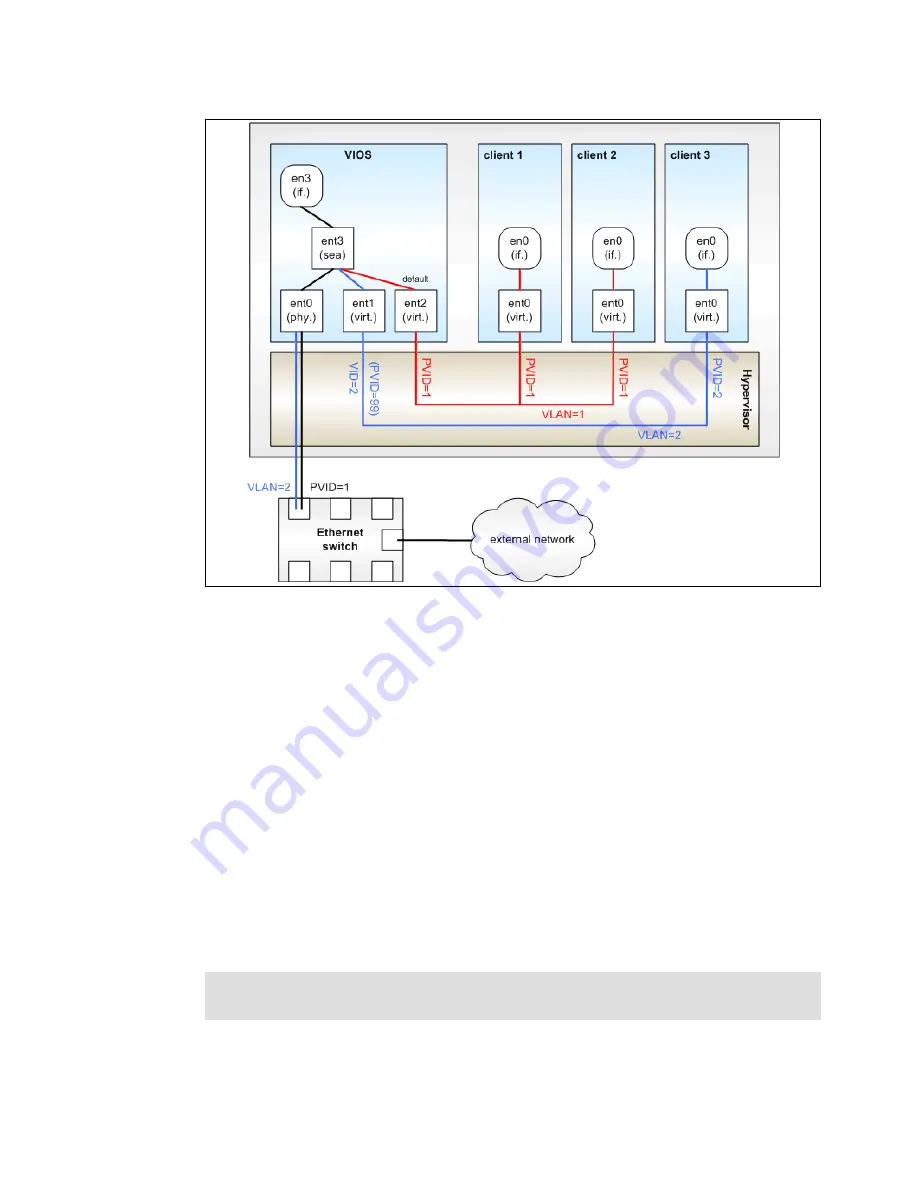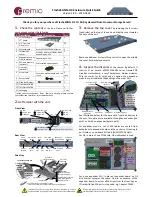
Chapter 3. Virtualization
123
Figure 3-5 Architectural view of a Shared Ethernet Adapter
A single SEA setup can have up to 16 Virtual Ethernet trunk adapters and each virtual
Ethernet trunk adapter can support up to 20 VLAN networks. Therefore, it is possible for a
single physical Ethernet to be shared between 320 internal VLAN. The number of shared
Ethernet adapters that can be set up in a Virtual I/O server partition is limited only by the
resource availability as there are no configuration limits.
Unicast, broadcast, and multicast is supported, so protocols that rely on broadcast or
multicast, such as Address Resolution Protocol (ARP), Dynamic Host Configuration Protocol
(DHCP), Boot Protocol (BOOTP), and Neighbor Discovery Protocol (NDP) can work across
an SEA.
A SEA does not require a configured IP address to be able to perform the Ethernet bridging
functionality. Configuring an IP address on the Virtual I/O Server is helpful so that it can be
reached by TCP/IP. This is necessary, for example, to perform dynamic LPAR operations or to
enable remote login. This can be done either by configuring an IP address directly on the SEA
device, or on an additional virtual Ethernet adapter in the Virtual I/O Server. This leaves the
SEA without the IP address, allowing for maintenance on the SEA without losing IP
connectivity in case SEA failover is configured.
For a more detailed discussion about virtual networking, see:
http://www.ibm.com/servers/aix/whitepapers/aix_vn.pdf
Note:
Shared Ethernet Adapter interfaces can be used by both dedicated CPU (LPAR) and
shared processor pool (SPLPAR) client logical partitions.
Summary of Contents for Power 595
Page 2: ......
Page 120: ...108 IBM Power 595 Technical Overview and Introduction...
Page 182: ...170 IBM Power 595 Technical Overview and Introduction...
Page 186: ...174 IBM Power 595 Technical Overview and Introduction...
Page 187: ......
















































